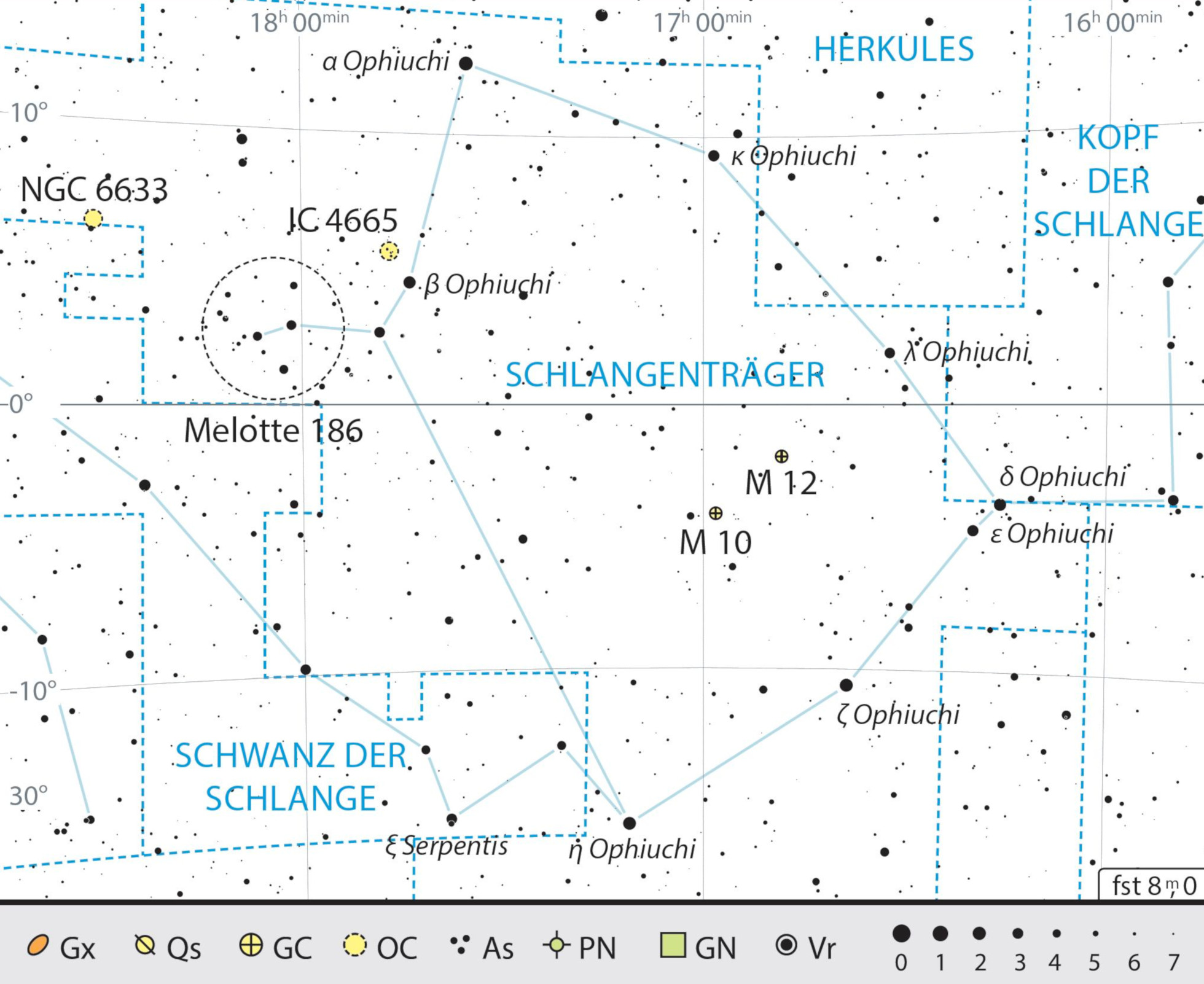Ophiuchus
The constellation is inconspicuous, but there are seven Messier globular clusters to be seen, among them the bright pair M10 and M12.
 Old depictions show the serpent bearer together with the now lost constellation Taurus Poniatovii (Poniatowski's Bull).
Old depictions show the serpent bearer together with the now lost constellation Taurus Poniatovii (Poniatowski's Bull).The extensive constellation of Ophiuchus is to be found in the large section of the sky between Hercules and Scorpius. It is not especially conspicuous, and its size makes it hard to locate. Old star charts are true to its name and depict Ophiuchus actually carrying a large snake in his hands, although the celestial snake is meanwhile represented by its own constellation. The serpent bearer is generally known by its Greek name Ophiuchus; but it was previous known by the Latin name Serpentarius.
It is also the constellation in which the Milky Way’s last supernova was observed. It appeared in October 1604 close to ξ Oph, shone brighter than the brightest star, and conclusively proved the (Copernican) reservations about the immutability of the night sky.
The art of healing in the sign of the snake
The origin of the constellation cannot be traced precisely. For some historians, it started with the Babylonian astronomers around 3,000 years ago, for whom the constellation was supposed to represent the battle between the goddess Tiamat and her grandson Marduk. Marduk sliced the ancient snake-shaped goddess into two pieces, forming the countenance of heaven and earth from her corpse. Thus, Ophiuchus could have symbolised the Babylonian creation myth. According to another interpretation – for Johannes Kepler, indeed the most fitting – the Trojan Laocoön, who saw through the Trojan horse plot, hid behind it. But the gods sent two serpents, who strangled the father with his two sons. The similarity between the famous Laocoön sculpture and old depictions of Ophiuchus is intriguing.
According to the best known myth, the constellation represents the Greek god of medicine. Asclepius (meaning entwined by a serpent) even managed to bring a dead man back to life, which angered Hades, the god of the underworld. As a punishment, the healer was killed with a lightning bolt and placed among the stars. His symbol is a staff entwined by a snake, and today the Rod of Asclepius is still the symbol of medicine, pharmacy, the medical profession, and it adorns chemist shop signs.
Clusters and a long-lost bull
Like other constellations near the galactic centre, Ophiuchus with its many clusters is especially interesting. The constellation’s seven Messier objects are all globular clusters; M10 and M12 are the brightest and can be resolved with a 100-mm telescope. Two special examples of open clusters are NGC 6633 and IC 4665, because they are visible with the naked eye under a dark sky and are especially beautiful when observed with binoculars.
Another target visible with the naked eye is a V-shaped group of stars: cluster Melotte 186. About 240 years ago, this was visualised as the head of constellation Taurus Poniatovii. It was created in honour of the last king of Poland, but quickly sank into obscurity, and is not one of the 88 constellations recognised today.
 Outline map of the constellation of Ophiuchus with our observing recommendations. J. Scholten
Outline map of the constellation of Ophiuchus with our observing recommendations. J. ScholtenAuthor: Nico Schmidt / Licence: Oculum-Verlag GmbH
